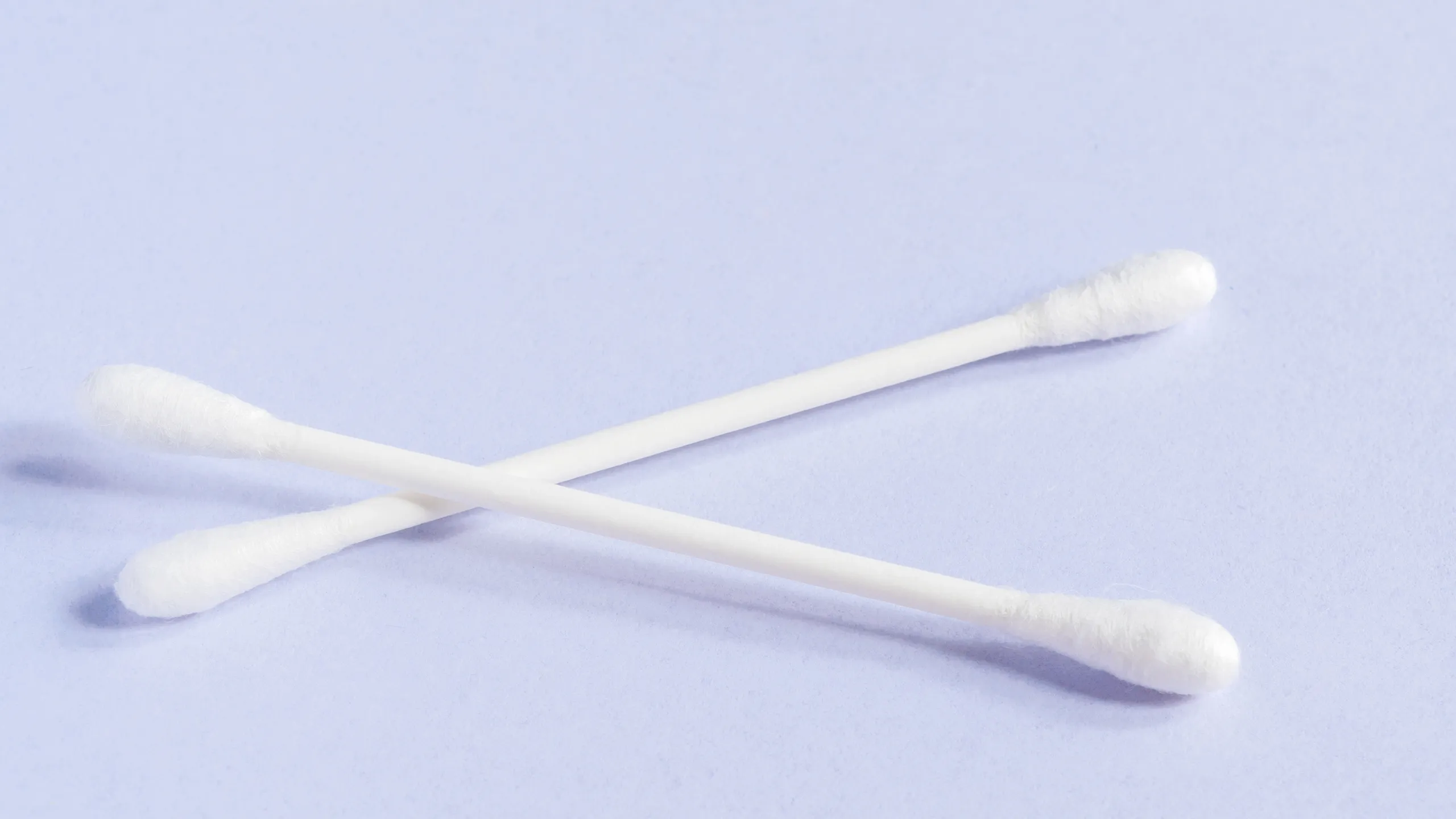Last Updated on: 5th January 2026, 05:43 am
Many people will likely need to extract their wisdom teeth since they do not always fit in space or are simply not aligned with the other teeth, which could lead to dental health and aesthetic problems because of the healing wisdom tooth hole.
After the extraction, specific care must be taken to avoid infections among conditions. However, sometime later when the wound has closed, holes may remain, which upon occasion may be the size of the extracted molar. This happens because the stitches may be insufficient or the dentist simply did not put stitches.
Therefore, food entering these spaces can become deposited in these holes. However, it is not a cause for concern since it does not cause infection; but it can be very uncomfortable and must be properly removed while the tooth extraction healing stages begin.
Tips to avoid food becoming stuck in a healing wisdom tooth hole
To prevent food from getting stuck in the hole left by wisdom tooth extraction, follow the recommendations of your dentist or ask what type of food you should eat, how you should perform oral hygiene, and what type of rinses to use. Next, we will give our recommendations to apply after extraction:
- Soft diet: To avoid food deposits, possible infections, hemorrhages, and other affectation of the dental alveolus, a soft diet must be strictly adhered to for at least the first 24 hours. According to the outcome of the surgery, semi-soft food could be introduced little by little. You should avoid foods that are hard, crunchy, or chewable for a long time. Also, avoid chewing at the extraction site if possible. It is suggested to opt for foods that are not hot, but rather lukewarm or at room temperature.
- Avoid hot and spicy food: Very hot foods can break a clot and cause bleeding at the surgery site. they may cause dryness. Similarly, spicy foods can cause irritation and infection.
- Adequate hydration: Increasing fluid intake will hydrate and keep the mouth moist, favoring the gums, avoiding food deposits, and thereby improving saliva production. This speeds up recovery and prevents the appearance of cavities; however, the consumption of high-sugar and carbonated beverages is not recommended.
- Stay away from alcohol: Alcohol can interfere with healing and increase pain, swelling, and possible bleeding. So as much as possible don’t drink alcohol after a tooth extraction.
- Do not consume small foods: Due to their size, they are more easily deposited in the hole left by the extraction, and it becomes more difficult to remove them from the hole.
- Avoid any activity that involves sucking: Sucking results in a dry socket, a complication of tooth extraction caused by the removal of the blood clot that forms over the hole. Some examples of sucking are smoking, drinking with a cigarette, or spitting, among others.
How to clean the hole of the healing wisdom tooth hole
When food enters the hole, which is normal, if it does not bother you too much, you can choose to leave it; over time it will come out on its own. If you decide to remove it over the discomfort or it presents a bad smell, avoid removing it with your fingers, tongue, or any unsterilized, pointed, or sharp object as this could loosen the stitches, burst the clot, or cause an infection by introducing bacteria and possibly breaking down the healing tissue. To avoid the inconvenience, we suggest the following options for removing food:
- Rinse with salt water: 24 hours after the extraction, you can rinse with warm salt water (such as saline, to help remove food that has lodged in the hole.
Preparation:
-
- Mix 1 tablespoon of salt in a glass of warm water, not hot or cold.
- Rinse without vigorously shaking in the mouth, and make gentle movements, so as not to burst the clot.
- Don’t spit out the rinse, gently pour it into a cup or sink.
- Repeat the rinse up to four times a day.
- Rinse with herbal tea: If salt water is not to your liking, you could also rinse with an infusion of warm herbal tea. Some have known anti-inflammatory properties: chamomile, turmeric, and green tea. There are other possibilities you can buy in health food stores such as mint tea, oregano oil, and coconut oil, among others. The recommendations are the same as for the saltwater rinse.
- Prescription mouthwash: Ask your dentist what type of rinse you can use 24 hours after the tooth extraction has been performed. They generally recommend one with bactericidal properties to eliminate bacteria. It should be used under the same indications as salt water. For more tips, check out our guide on how to choose your mouthwash.
- Syringe with warm water: Talk to your dentist, so he can inform you if you can use this technique and how to handle it. The goal is to cleanse the area of food, controlling the flow of water to flush out debris. It must be used carefully or it may remove the blood clot which helps speed healing. In case you elect to carry out this procedure, it is recommended to heed the following steps:
-
- Take a syringe and fill it with warm water. You can also use the saltwater solution.
- Keep the tip of the syringe close to the wound, but do not touch it. Rinse the site.
- Try to clean it from different angles to cover the area and prevent infection. However, avoid pushing hard.
- Spray bottle: If you do not have a syringe, you could also perform the same method with a bottle; however, it cannot be applied until you can hold your mouth wide open for a few minutes.
- Oral irrigator: Consult it with your dentist so he can tell you if its use is appropriate according to the case. When using it, gently direct the jet toward where the food particle is lodged. Remember that this can only be done 24 hours after the surgical procedure.
- Soft brush: With a very soft new toothbrush, very carefully try to get the food particles out of the hole. Do not use force and make very light strokes. This technique is recommended one week after surgery.
- Cotton swab: In case the toothbrush is uncomfortable, use a cotton swab, but it must be sterilized. You should apply very gentle strokes to the area, careful not to push the food particle further in. It is recommended to perform this technique one week after tooth extraction.




When should I see the dentist and how long does it take to heal?
After the surgical procedure for dental extraction, the hole takes 4-6 weeks to close completely. However, the recovery from minor surgery can take between 3-7 days. Depending upon the complexity, the recovery may take less time and close completely much sooner. In addition, the response of each person’s body and the care taken with the surgery are also important factors.
Some recommendations for a quick recovery are:
- Do not rinse during the first 24 hours after surgery.
- After 24 hours, perform rinses and washes, as recommended above or according to those indicated by your dentist.
- Change the sterile gauze frequently during the first hour after the extraction.
- The first 60 min after tooth extraction are key; it is recommended to cover it with a sterile gauze.
It is important to consult your doctor or dentist immediately if you have symptoms such as:
- Severe swelling, which continues after 2-3 days after surgery
- Severe and worsening pain
- Palpitations and tingling
- Suppuration of pus
- Excessive bleeding
- Fever
- Numbness
- Unpleasant taste or persistent sour taste that does not go away
In addition to these symptoms, it could present others associated with infection such as bad breath, dry alveoli, or a visible bone. When you require extraction of wisdom teeth or another dental piece, take into account the recommendations given in this article for proper care and a quick recovery.
Contact Us
If you have any questions about dental conditions or other topics, you can contact us at Channel Islands Family Dental as well as our page on Facebook. We look forward to your visit and we will make a timely diagnosis. Our dentists in Oxnard, Santa Paula, Ventura, Newbury Park, and Port Hueneme will be able to guide you toward the best treatment to take care of your health and give you back your best smile.
Bibliography
- Whelan C, Frank C. 8 Tips to Remove Food Stuck in Wisdom Tooth Hole. Healthline (Internet). Published on Jan 07, 2021, (accessed on Oct 17, 2022). Available in: https://www.healthline.com/health/food-stuck-in-wisdom-tooth-hole
- Patient & Family Guide. After Dental Extractions or Wisdom Teeth Removal. Nova Scotia Health Authority (Internet). (accessed Oct 17, 2022). Available in: https://www.nshealth.ca/sites/nshealth.ca/files/patientinformation/0646.pdf
- Watson I. Food is stuck in a hole where the wisdom tooth is extracted. Greetings (Internet). Published on May 17, 2019, (accessed on Oct 17, 2022).
- Lane A. How to Remove Food from Extracted Wisdom Teeth Sockets. WikiHow (Internet). Updated Sep 24, 2022, (Accessed Oct 17, 2022). Available in: https://www.wikihow.com/Remove-Food-from-Extracted-Wisdom-Teeth-Sockets

















